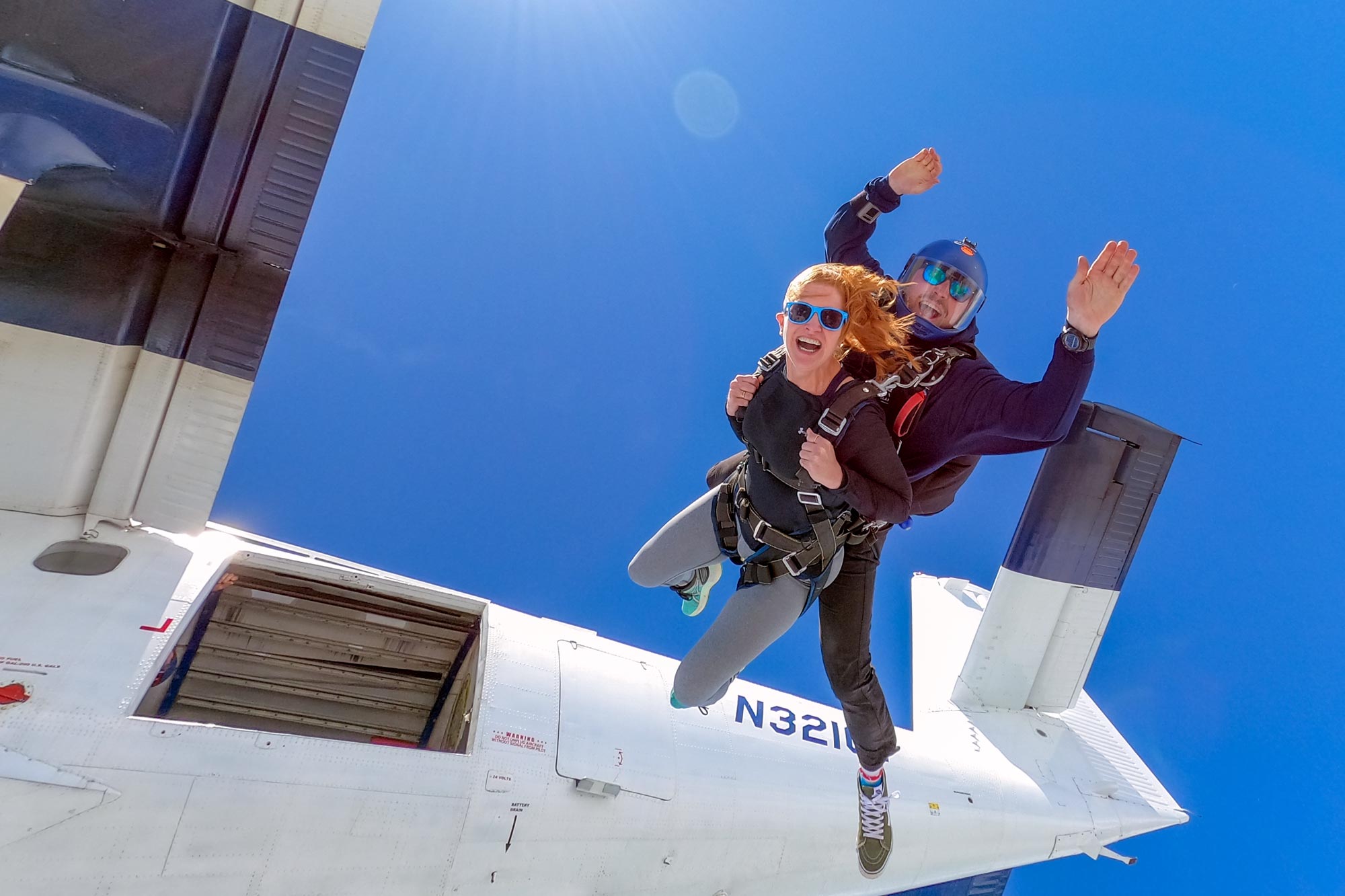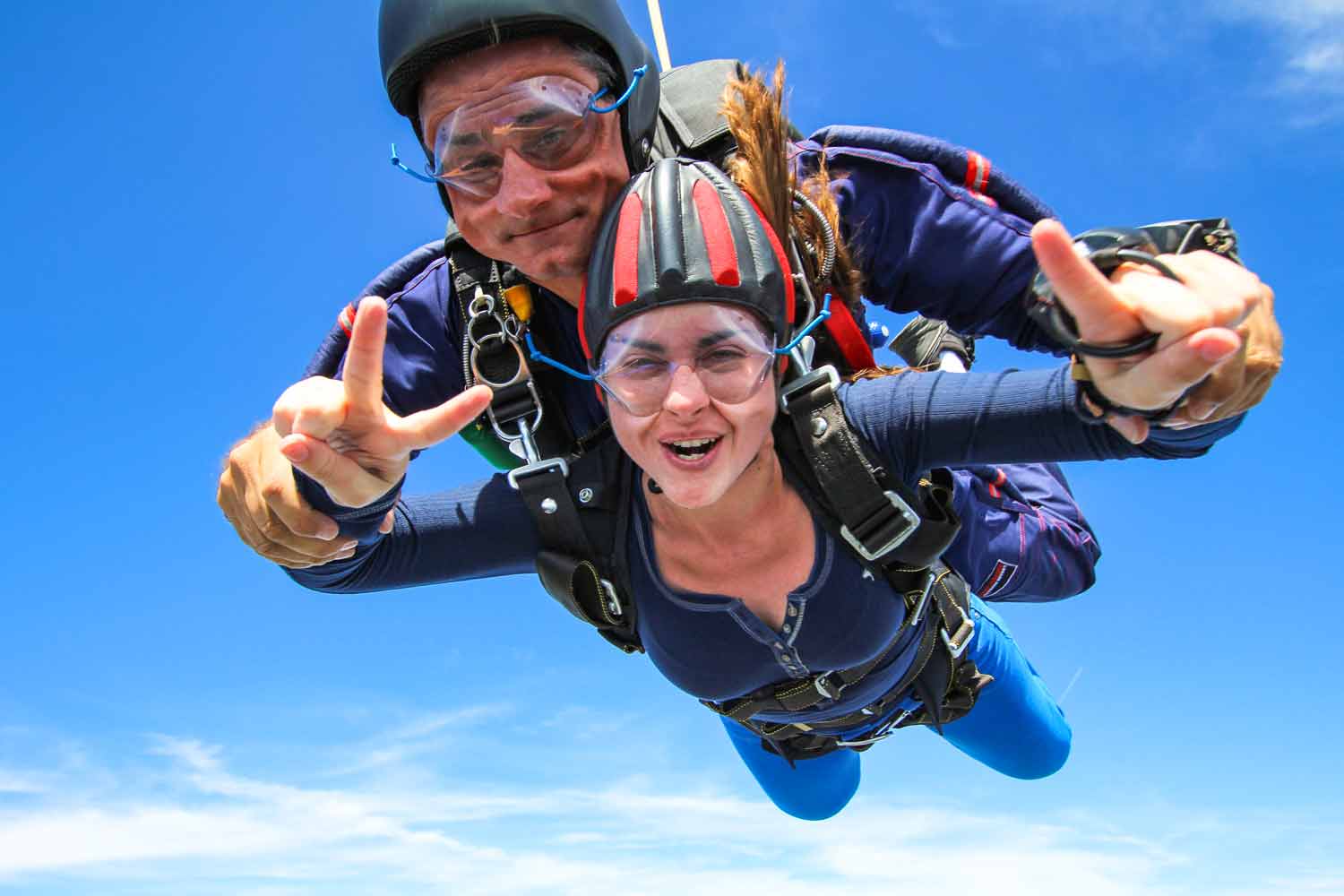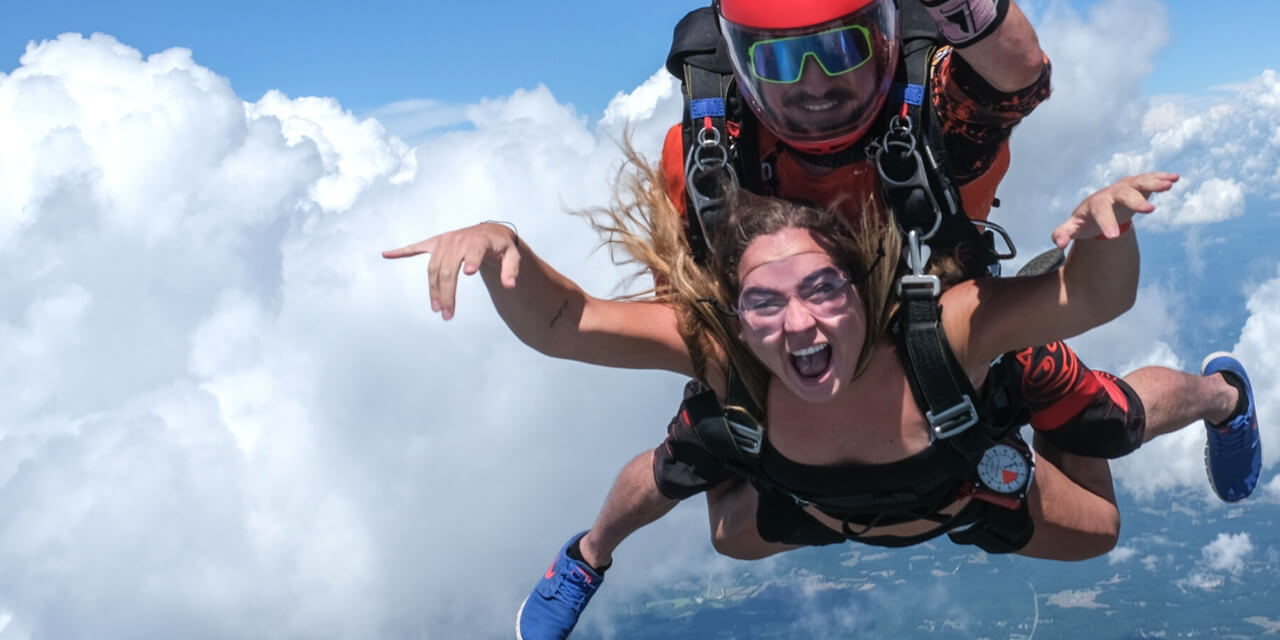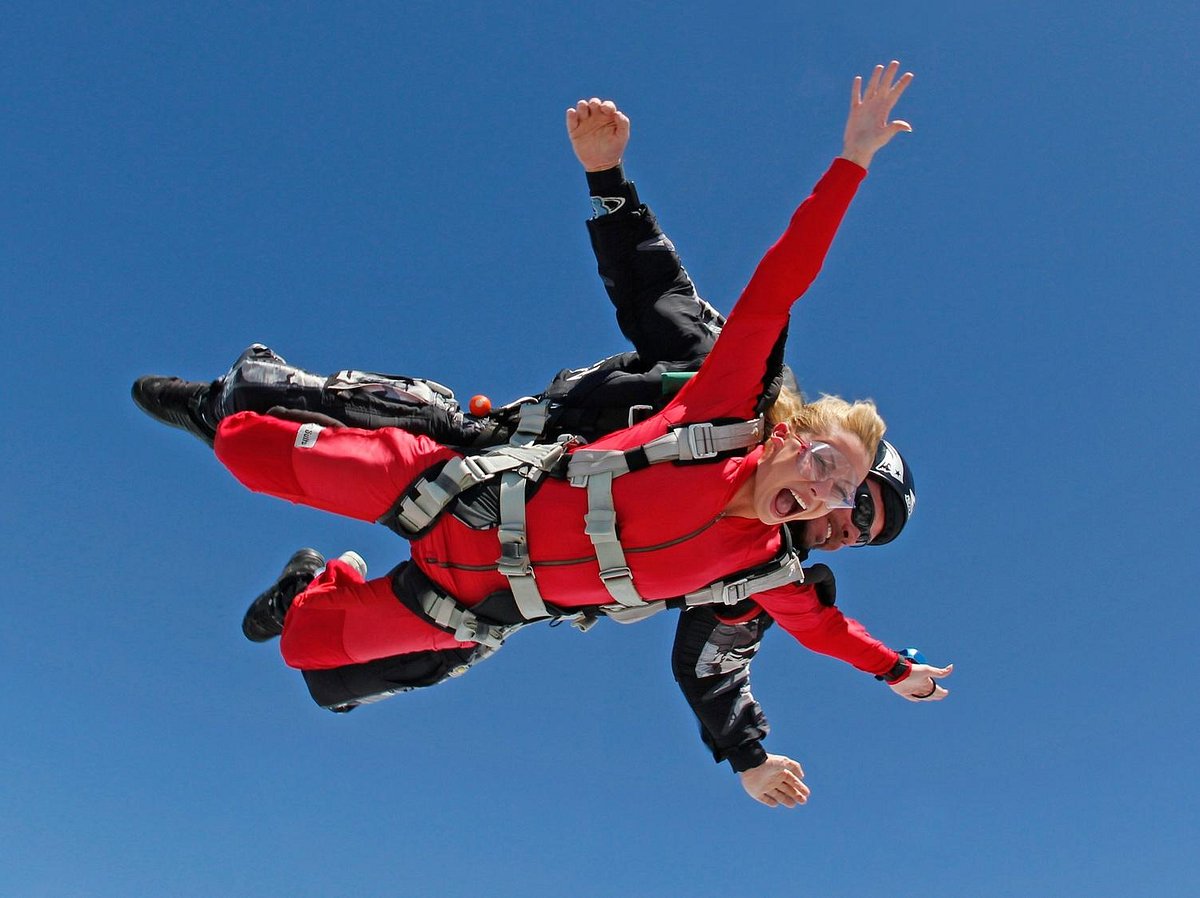When it comes to skydiving height, every foot of altitude adds a mix of excitement, freedom, and breathtaking views. Whether you’re jumping from 10,000 feet, 15,000 feet, or even higher, your altitude directly shapes your experience — from how long you freefall to what you see on the way down.
- What Exactly Is “Skydiving Height”?
- Fact #1 – Is a 15,000 ft Skydive High?
- Table of Contents
- Fact #2 – Can You Skydive from 3,000 Feet?
- Fact #3 – The Highest Skydives Ever: How Far Up Can You Go?
- Fact #4 – Minimum Heights & Height Restrictions for Skydiving
- Fact #5 – How Skydiving Height Affects the Experience
- Fact #6 – Height & Weight Restrictions: What You Need to Know
- Fact #7 – Tandem Skydiving Height: What First-Time Jumpers Can Expect
- FAQ – People Also Ask
- Final Thoughts: Skydiving Height is Where the Thrill Begins
If you’ve ever wondered, “Is a 15,000 ft skydive high?” or “Can you skydive from 3,000 feet?”, you’re in the right place. Let’s dive into seven thrilling facts about skydiving heights that will truly blow your mind.
What Exactly Is “Skydiving Height”?
“Skydiving height” refers to the altitude — or how high above the ground you are — when you jump out of the airplane.
Most recreational skydives take place between 10,000 to 15,000 feet (3–4.5 km) above the ground. However, the exact height depends on several factors:
- Type of skydive (tandem, solo, or advanced)
- Aircraft capability
- Weather conditions and airspace regulations
- Drop zone altitude above sea level
Here’s a quick overview:
| Type of Jump | Typical Height (Feet) | Height (Kilometers) | Freefall Duration (Approx.) |
|---|---|---|---|
| Static Line Jump | 3,000–4,000 ft | 0.9–1.2 km | 10–15 seconds |
| Tandem Skydive | 10,000–15,000 ft | 3–4.5 km | 45–60 seconds |
| High Altitude (HALO) | 18,000–25,000 ft | 5.4–7.6 km | 90 seconds or more |
Each height offers a unique thrill, but the sweet spot for most first-timers is around 13,000 feet — just enough to enjoy a full minute of heart-pounding freefall!
Fact #1 – Is a 15,000 ft Skydive High?
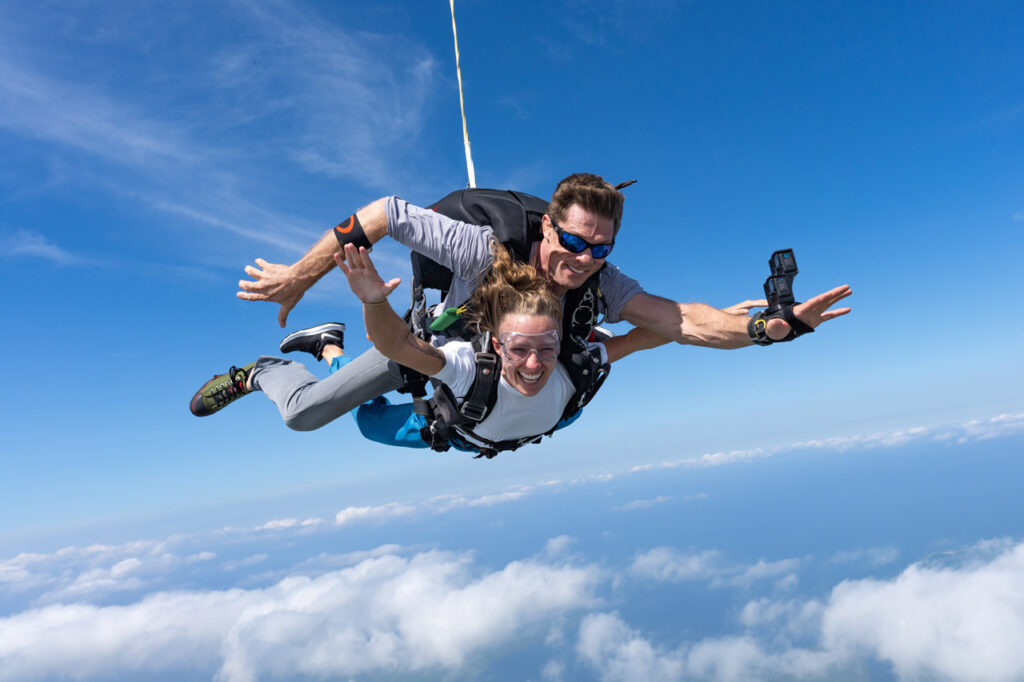
Table of Contents
Yes, absolutely — 15,000 feet is considered a high-altitude skydive for civilians. At this height, you’ll enjoy:
- Around 60–70 seconds of freefall
- Cooler temperatures and thinner air
- A panoramic view of the horizon that feels endless
It’s one of the most popular options for thrill-seekers because it gives you more time to experience the rush before your parachute opens. However, beyond 15,000 ft, skydivers often need supplemental oxygen, as the air gets thinner.
Fact #2 – Can You Skydive from 3,000 Feet?
Technically, yes — but it’s not a full freefall skydive.
At 3,000 feet (0.9 km), there’s barely enough time to experience freefall safely before you must deploy your parachute. These jumps are usually static-line or AFF training jumps for students, not recreational tandems.
Here’s what to expect:
- Parachute deploys almost immediately
- Freefall lasts only about 5–10 seconds
- Ideal for beginners learning canopy control
So, while you can jump from 3,000 feet, it’s more of a training jump than an adrenaline-filled skydive.
Fact #3 – The Highest Skydives Ever: How Far Up Can You Go?
The highest skydive ever took place from the stratosphere — over 135,000 feet (41 km)! That record belongs to Alan Eustace, who jumped from a helium balloon in 2014, breaking the sound barrier on his way down.
For everyday skydivers, however, the maximum legal altitude is much lower:
- Most drop zones cap at 15,000 ft.
- Some HALO (High Altitude, Low Opening) jumps reach 25,000 ft, requiring oxygen tanks and special training.
These high-altitude jumps offer the longest freefalls and are reserved for experienced thrill-seekers or military operations.
Fact #4 – Minimum Heights & Height Restrictions for Skydiving
Every type of skydive has a minimum safe height.
Here’s a quick summary:
| Type of Jump | Minimum Height | Reason |
|---|---|---|
| Static Line Jump | 2,800–3,000 ft | Enough time for parachute deployment |
| Tandem Skydive | 8,000–10,000 ft | Ensures full freefall experience |
| Solo Jump | 3,500–4,000 ft | Safety buffer for deployment |
| HALO Jump | 18,000+ ft | Requires oxygen and clearance |
Height restrictions are not just about excitement — they’re about safety and control. Too low, and the parachute won’t have time to deploy safely; too high, and you’ll need extra oxygen and clearance.
Fact #5 – How Skydiving Height Affects the Experience
The higher you go, the longer and more intense your freefall feels.
Here’s how height influences your jump:
- 10,000 ft: Around 30–40 seconds of freefall — short and thrilling
- 13,000 ft: About 55–60 seconds — the perfect balance
- 15,000 ft: Over a full minute of freefall — ultimate adrenaline rush
Besides duration, altitude affects your scenery, speed perception, and even air temperature. From 15,000 ft, the earth looks like a soft canvas of blues and greens — a sight that never gets old.
Fact #6 – Height & Weight Restrictions: What You Need to Know
Both height and weight impact skydiving safety and comfort.
Tandem rigs have harnesses that must fit snugly around your body. Most drop zones have:
- Maximum weight limits: usually 220–240 lbs (100–110 kg)
- Minimum height: around 4’10” (147 cm)
- Maximum height: roughly 6’6” (198 cm), depending on harness fit
If you’re taller or heavier, it’s important to check with your drop zone before booking. You can read more in our detailed guide:
👉 Can You Skydive in the Rain? — which also covers how weather conditions like clouds and rain affect altitude and jump safety.
Fact #7 – Tandem Skydiving Height: What First-Time Jumpers Can Expect
Most tandem skydives happen from 10,000–15,000 feet — giving beginners the perfect mix of thrill and comfort.
Your instructor handles all safety gear, altitude awareness, and parachute deployment. You just enjoy the view and the rush!
Here’s what to expect:
- Aircraft climb – about 15 minutes to reach altitude
- The jump – up to a full minute of freefall
- Parachute descent – 4–5 minutes of gliding to the landing area
If you’re looking for “skydiving near me,” check local drop zones to see their altitude options — some may even offer upgraded high-altitude experiences for extra freefall time.
FAQ – People Also Ask
Is a 15,000 ft skydive high?
Yes, 15,000 ft is one of the highest standard skydiving heights available to the public. It offers around 70 seconds of freefall, making it a premium experience for thrill-seekers.
Can you skydive from 3,000 feet?
Yes, but it’s usually for training purposes. At 3,000 ft, there’s barely any freefall time, and the parachute opens almost immediately.
How high is the highest skydive?
The record stands at 135,890 feet (41 km) by Alan Eustace in 2014 — an extreme jump from the stratosphere!
What is the maximum height for skydiving?
Most civilian skydives top out at 15,000–18,000 ft, while HALO jumps can go up to 25,000 ft with oxygen.
What is the minimum height for skydiving?
Minimums range from 3,000 ft (training) to 8,000 ft (tandem). Below that, it’s not considered safe for freefall.
What is tandem skydiving height?
Most tandem jumps occur between 10,000–15,000 feet, giving around a full minute of freefall.
Final Thoughts: Skydiving Height is Where the Thrill Begins
Skydiving isn’t just about jumping from a plane — it’s about defying gravity and savoring the beauty of our planet from miles above.
Whether you’re diving from 10,000 ft or pushing the limit at 15,000 ft, understanding skydiving height helps you choose the experience that fits your thrill level.
So, next time you plan a jump, remember: every foot higher means more sky, more views, and more memories.
Ready to take the leap?
Check out your local skydiving near me options and find your perfect altitude for adventure!
